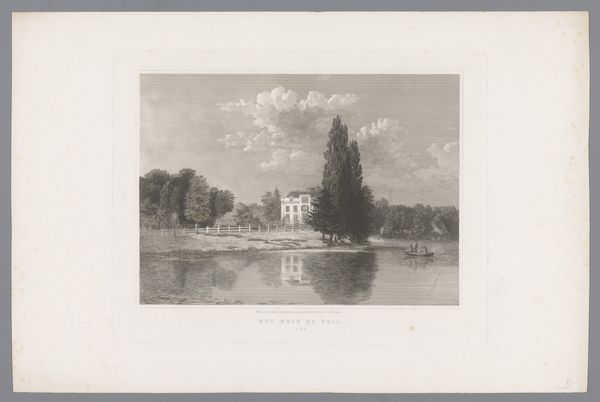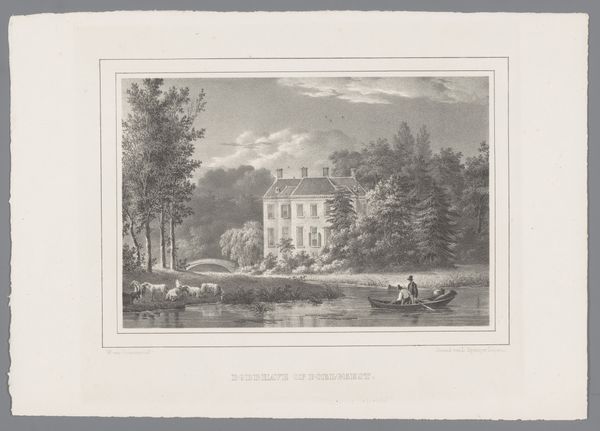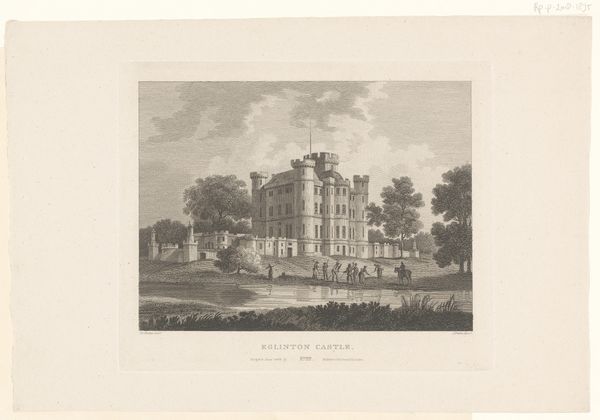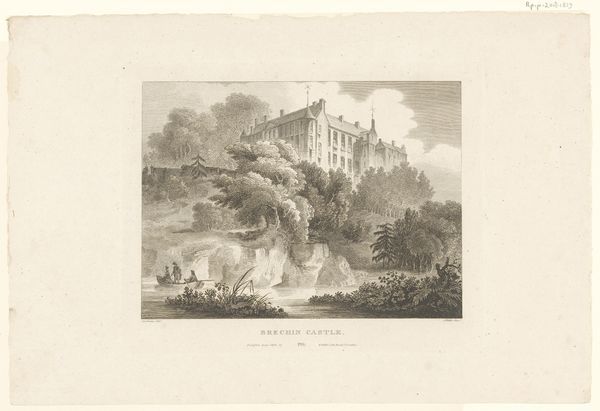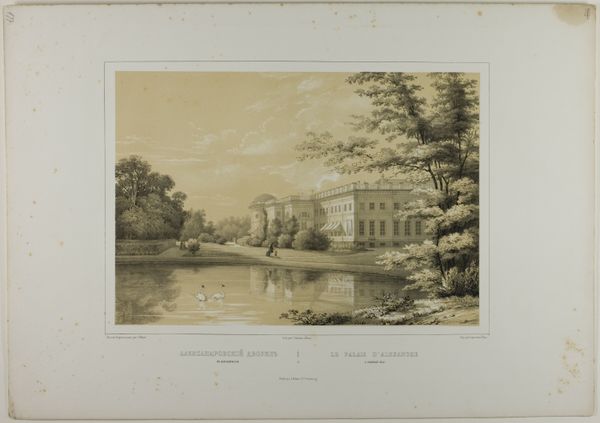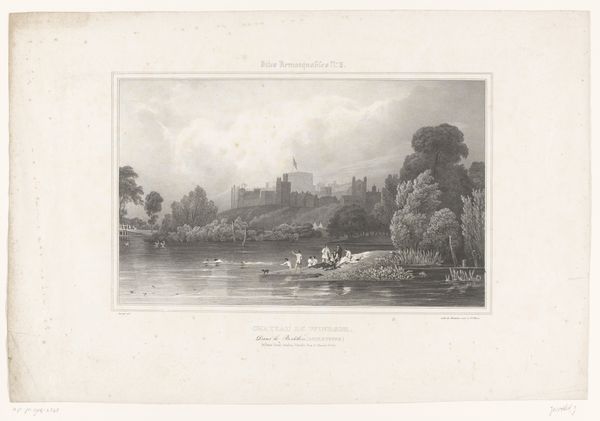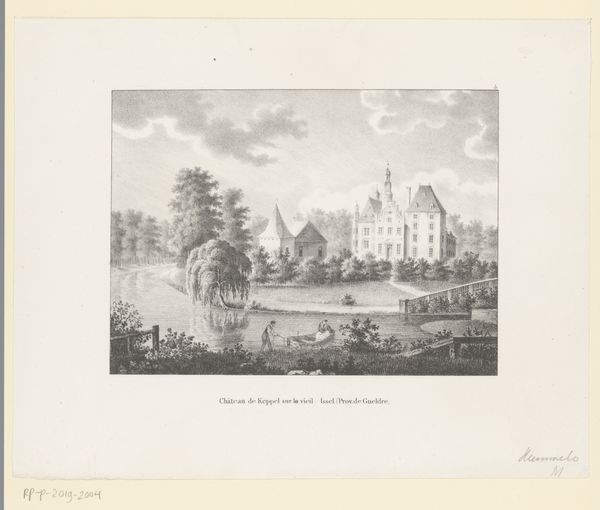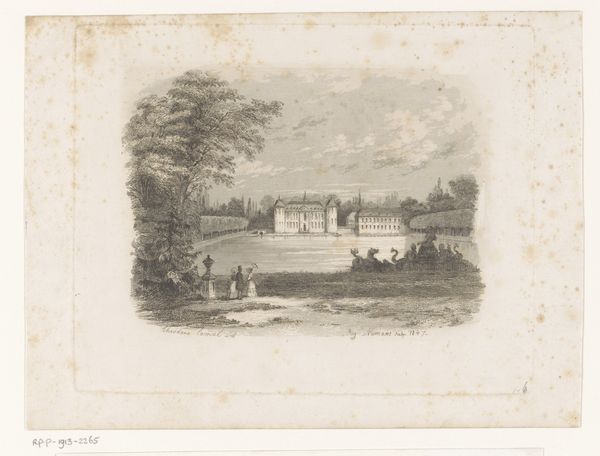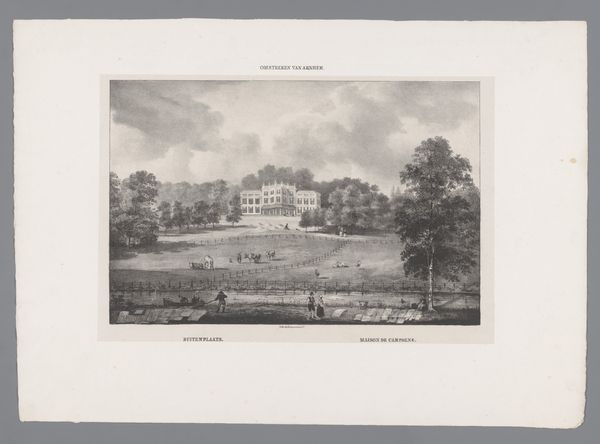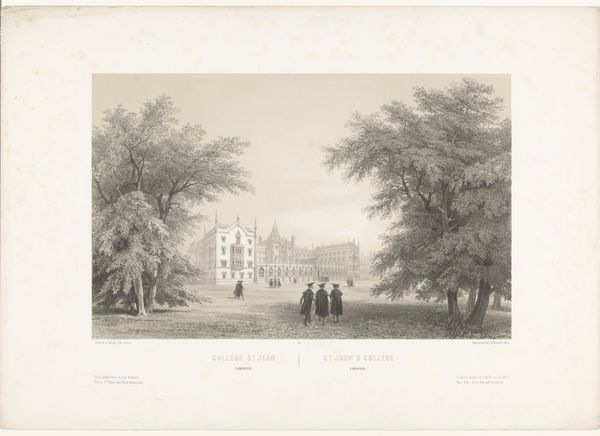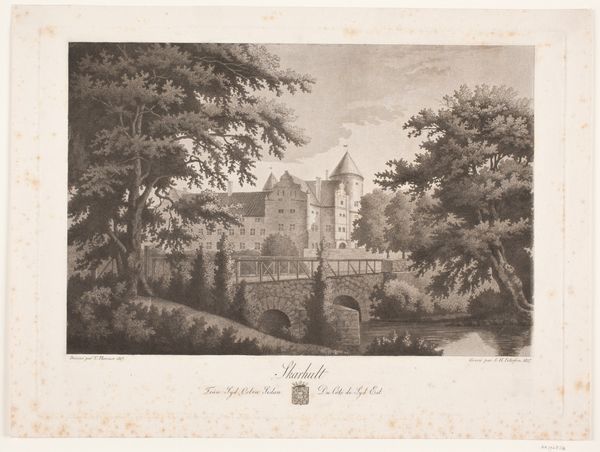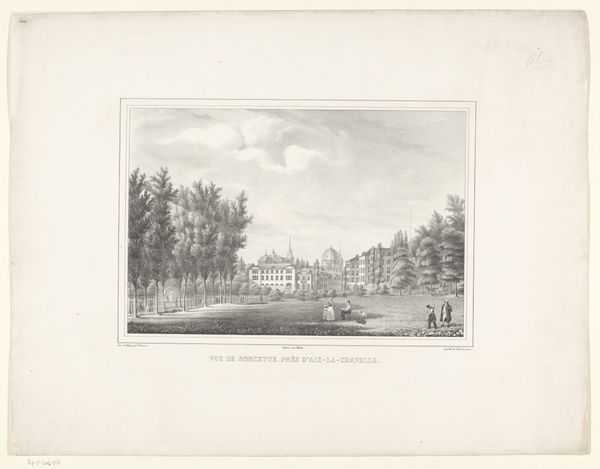
Dimensions: height 153 mm, width 255 mm
Copyright: Rijks Museum: Open Domain
Curator: Here we have "View of the Thames at Night," an engraving by Carel Christiaan Antony Last, likely created sometime between 1842 and 1887. Editor: It's beautiful, yet unsettling. The moon seems to cast a pallid light. It highlights the grand house on the riverbank but also makes it look…lonely. Curator: Romanticism loved to explore those contrasts. Notice the composition. The eye is led across the water, the silhouetted figures in the boat, right toward the looming architecture and shadowy trees. Editor: Right, and the symbolic weight that the grand estates of the English aristocracy held in this period—signs of power and wealth reflected in popular imagery. Curator: Absolutely. It captures a kind of ideal, even with its shadows. The Thames itself becomes almost mythic, a stage for quiet human dramas. Note the swans gliding on the water and the two figures rowing along a lake—both serve as motifs for elegance and natural grace. Editor: And is the Thames, for Last, a symbol of a nation, of empire perhaps? The constant current suggests enduring power and an eternal flow of goods, people, ideas. Curator: The darkness adds an element of the sublime. We understand this ‘grandeur’ on an emotional level precisely *because* we’re aware of how easily it might be disrupted or vanish in the gloom. Editor: The use of black and white here is superb in emphasizing a psychological complexity. A world of privilege rendered eerie, haunted almost. It invites you to contemplate something lurking just beyond sight. Curator: Indeed. The architecture could represent the weight of tradition itself. Ultimately, though, it remains ambiguous—allowing us to bring our own readings of status and history. Editor: For me, I am moved by the silent river, its quietness broken only by the oars, under the gaze of a house lit up as though awaiting someone special. Thanks for clarifying that a bit! Curator: My pleasure. I'm reminded that prints like these were important disseminators of ideals about place and national identity. And to examine those ideals from our present moment always remains essential.
Comments
No comments
Be the first to comment and join the conversation on the ultimate creative platform.
